Nonlinear Wave Loads and Green Water Acting on a Ship in Severe Sea Conditions
--
(1.China Ship Scientific Research Center,Wuxi 214082,China;2.China Ship Design&
Research Center(Shanghai Division),Shanghai 201100,China)
Abstract:A ship sailing in severe sea conditions will not only experience large amplitude motions but also suffer nonlinear wave loads including whipping and green water. The coupling effects of several kinds of nonlinear wave loads, especially whipping, may make the hull produce high-frequency and large-amplitude moments and forces,which threaten the safety of ships’structure.As a result,a lot of attention of scholars has been attracted to these problems in the past decades.In this paper,an experimental study of a ship model, which contained several cases with varied speeds, wave heights and directions and measured hull wave loads and green water pressure,was carried out in a seakeeping tank in China Ship Scientific Research Center.Moreover,the hull’s wave loads in large waves are calculated by a 2D nonlinear program (NORS) which combines nonlinear hydrodynamic forces and hydroelastic theory based on the potential theory. This program (NORS) ,which is able to consider the hull wet surface’s instantaneous change, whipping and green water effects in time domain, has been verified by several vessel model tests and proved to have a high degree of accuracy in the past several years.Meanwhile, the phenomenon and characteristics of multiple frequencies in the hull’s wave loads are discussed and analyzed on the basis of the model test and calculation results.The problem of green water is studied in model tests and its features in multiple speeds, directions and wave heights are analyzed. Finally, several meaningful conclusions are achieved and the result could be helpful to hull strength assessment and ship structure design.
Key words:wave loads;time domain;nonlinear;NORS
0 Introduction
Vessels would continuously endure wave loads when they are sailing in the sea, so how to determine the design wave loads is the key basis for ship structure design. A phenomenon called slamming between the ship and the wave is likely to happen in severe sea conditions,and it could be divided into three kinds according to the different locations: bottom slamming, bow slamming and green water. Severe slamming would probably cause the ship structure’s transient vibrations with high frequency, which is called whipping, possibly producing large wave bending loads and damaging the ship structure.
The whipping problem has been attracting more and more attention from the academic and industrial sector in recent years such as WU and Cui (2009)[1], Malenica (2012)[6], Wang(1996)[7], with the increasing demand for huge-size and high-speed ships whose structure is more likely to be threatened by whipping problems. Hydroelastic theory, considering the coupling effect of elasticity effect and wave loads, is able to predict the motion, structure deformation, and shear and bending loads more precisely.Researches on hydroelastic methods have been conducted by many researchers such as Zou(2013)[2],Yang(2015)[3,8],Liu(2013)[4],Faltinsen[5]and so on.
A deep-V Vessel’s nonlinear wave loads including slamming, whipping, green water effects are studied by calculation and model tests. This type of vessel’s wave loads appear to be obviously non-linear in severe sea conditions with the effect of slamming and green water because of the bow flare. Model test was carried out in a seakeeping tank, which contains several cases with varied speeds, wave heights and directions. Meanwhile, hull’s wave loads in large wave are calculated by 2D nonlinear program NORS based on potential theory. The feature is analyzed and discussed,and the result could help hull strength assessment and design.
1 Segmented ship model test
Model tests including several regular and irregular wave cases were carried out in a seakeeping tank which is 69 m long, 46 m wide and 4 m deep in China Ship Scientific Research Center. Model hull’s wave loads in large waves were measured in several cases with varied speeds, wave heights and directions. The model was made of FRP with a wooden base and was equally divided into 4 segments.Main particulars of the model ship are presented in Tab.1.
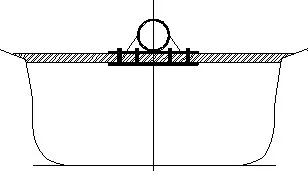
Fig.1 The position of the circular steel beam

Tab.1 Main particulars of the model ship
The 4 segments were connected by a circular steel beam (shown in Fig.1) attached with strain gauges for measuring section bending forces. The model was designed by the rule of geometric and kinematic similarity. Moreover, The circular steel beam simulated the stiffness of the ship and the stiffness of the circular steel beam and the ship structure was designed to match the rule:


Fig.2 Two pressure sensors on the superstructure
Two pressure sensors were distributed on the front end of the superstructure as shown in Fig.2 and four pressure sensors were placed on the front deck as presented in Tab.2. Green water effects were measured by these sensors(KYOWA PGM-05KG).
The motions (pitch and roll) and acceleration were respectively measured by a laser gyro and acceleration sensors. All the data of the sensors were sampled by a data acquisition system of Rainfe Inc.with different sampling rate for different channels where motions,strain,acceleration and wave height channels’sampling rate was set as 500 Hz,and the sampling rate of pressure channels was 5000 Hz to get the green water effects’feature.
Heading cases in large regular wave heights (180 mm, 236 mm) and with different speeds(0.9 m/s, 1.6 m/s, 2.3 m/s) were carried out in the test as presented in Tab.3. Slamming and green water appeared in these cases and the wave loads presented obvious non-linear features.
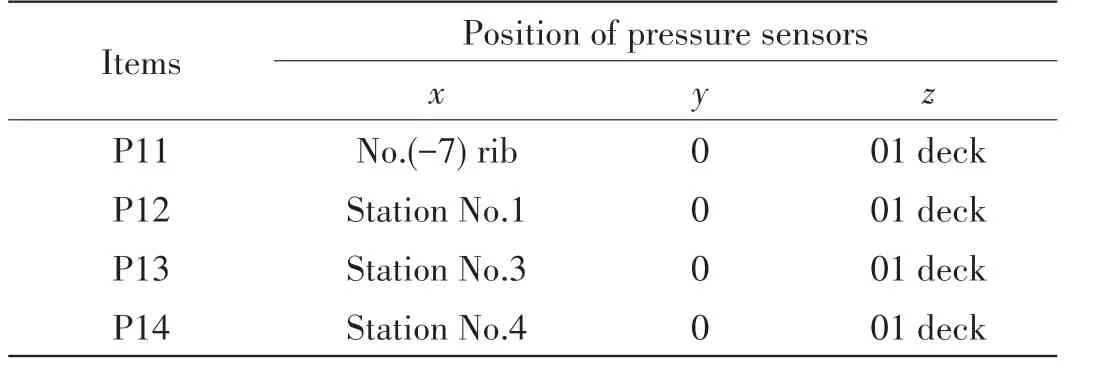
Tab.2 Details of four pressure sensors on the deck

Tab.3 Cases with large regular wave heights
1.1 Wave loads experimental results
Figs.3-6 show the time-history and frequency spectrum(Fourier transform)curves of wave loads in B15-B18 cases , and‘CM’,‘WM’and‘HM’respectively present combined wave loads,low-frequency component and nonlinear high-frequency component of wave loads.
As shown in Figs.3-6, the wave loads signal is nearly harmonic in case B15 and the nonlinear high-frequency component is quite low because of the low speed, and it is obvious that the loads are mainly made up of low-frequency wave component in the frequency spectrum(Fourier transform) curve. As the speed increases in cases B16-B17, bending response signal shows distortion and asymmetry between the hogging and sagging with relatively high strong high-frequency component. The frequency spectrum (Fourier transform) curves show typically‘multiple frequency’phenomenon: There are several energy concentrating frequencies except low wave frequency, which is times of encounter frequency. This phenomenon is related with bow-flare area’s wet surface change caused by large motions, bow area slamming loads and green water on the deck. As the wave height increases to 236 mm and the speed is 2.28m/s,wave loads demonstrate more clearly nonlinear, the proportion of first-order natural frequency and multiple frequency increases obviously.

Fig.3 Time-history and frequency spectrum curves of wave loads in B15
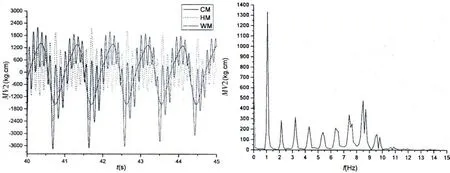
Fig.4 Time-history and frequency spectrum curves of wave loads in B16
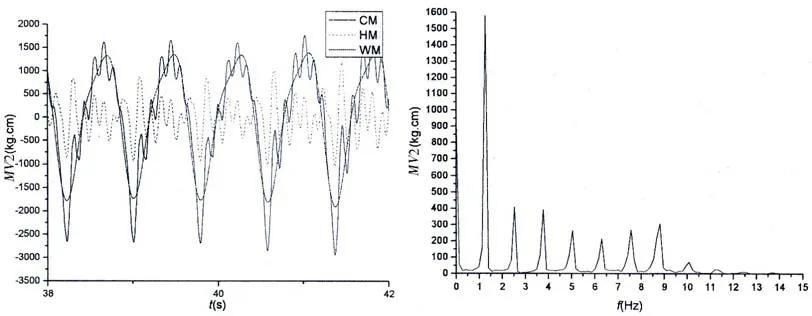
Fig.5 Time-history and frequency spectrum curves of wave loads in B17
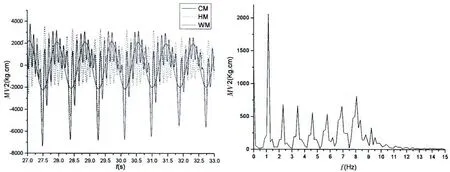
Fig.6 Time-history and frequency spectrum curves of wave loads in B18
1.2 Green water experimental results
Snapshot of green water impact is shown in Fig. 7. The phenomenon of green water seems to be connected with large hull motions with the bulbous bow out of the water, so the loads are quite complicated and hard to be simulated in theory.As a result,the method of tests becomes a very effective tool to investigate the impact of green water.
As showed in Figs.8-9,the green water impact appears in very short time which is about 0.2 s-0.4 s. P11 is the pressure measurement point in the front the deck and P16 is on the front end of the superstructure. It can be observed in Figs.8-9 that green water impact on the superstructure is greater than that on the deck and the signal in P16 has sharper peak rises as the superstructure is vertical to the deck.
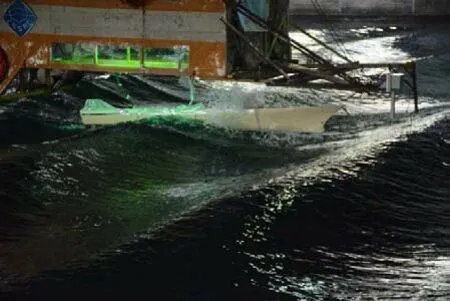
Fig.7 The phenomenon of slamming and green water
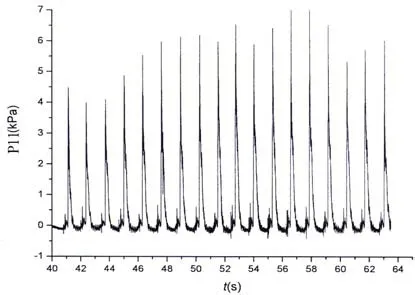
Fig.8 Green water impact at P11(2.28 m/s,H=236.4 mm,180°,λ/L=1.1)

Fig.9 Green water impact at P16(2.28 m/s,H=236.4 mm,180°,λ/L=1.1)
Tab.4 illustrates the average peak values of green water impacts in P11-P16. P11-P14 are pressure measurement points along the deck and P15-P16 are on the front end of the superstructure.From the results in the table,it can be seen that the impact in P11 is the largest of all points on the deck and the peak value in P15 is greater than any point in this test.A conclusion can be reached that the largest green water impacts appear easily in the areas of the front deck and front end of the superstructure.

Tab.4 Green water impact in case B18(2.28 m/s,H=236.4 mm,180°)
2 Numerical simulation and method
NORS is a 2-D nonlinear wave loads program developed by China Ship Scientific Research Center, which is able to predict the the hull’s nonlinear response in severe sea conditions.This program(NORS),considering the hull wet surface’s instantaneous change,whipping and green water effects in time domain,was verified by several vessel model tests and proved to have a high degree of accuracy in the past several years,and some results could be found in Gu(2000)[9].The program treats the hull as an elastic beam by hydroelastic theory and is developed according to the strip theory.
According to the S.T.F linear strip theory[10], the force on each unit hull length can be expressed as:

whereB(x)is width,Zr(x,t)is relative displacement between ship and wave,m(x),N(x)are added mass coefficient and damping coefficient in still water.
To large-size ships with bow-flare in severe sea conditons,the fluid forces can be extended as:

where:

F1,F2,F3are integrated along the instant wet surface in every calculation second, added mass and damping coefficientsm(x,t),N(x,t)are solved by the instant wet surface,slamming force on the bow-flare is considered as the square of relative speed between the bow-flare and the wave,FDis green water force,BDis the half width of the deck,Zs(x,t)is relative displacement between ship and wave,andh(x,t)is the height of green water on the deck.
The simulation hull model was built as the hull lines and the simulation was carried out using the program NORS. The time-history and frequency spectrum results were compared with test results of case B16 (MV2,v=1.61 m/s,H=181.8 m/s) as shown in Fig.10. It could be observed that the calculation simulates the effect of first-order natural frequency and multiple frequency quite well.As the damping of motion and structure vibration is hard to simulate,the result of the energy of encounter frequency and first-order natural frequency is larger than that of tests.
3 Conclusions
A series of model tests on a deep-V Vessel segmented model were carried out in China Ship Scientific Research Center. Wave loads, motions and green water impact pressure were measured for various regular and irregular wave conditions with a series of speeds, directions and wave heights. Using a 2-D nonlinear wave loads program NORS, a simulation hull model was built and the hull’s nonlinear responses considering whipping and green water effects in severe sea conditions were simulated in time domain.Based on the experimental and numerical results,the following conclusions are drawn:
(1) In the tests, it was observed that there are several energy concentrating frequencies in the frequency spectrum(Fourier transform) curves of wave bending moments except low wave frequency, which is times of encounter frequency. What’s more, as the wave height and the speed increase, the proportion of first-order natural frequency and multiple frequency increases obviously.
(2) In tests with high wave heights, green water impacts appeared frequently and rapidly.The largest impact was found on the front end of the superstructure. It should be noted that the superstructure and the front-edge of the deck are the key areas to endure great green water impacts.
(3) NORS can consider the hull wet surface’s instantaneous change, whipping and green water effects in time domain. It simulates this vessel’s nonlinear wave loads in heading sea quite well and the results are proved to be quite accurate. However, the damping of motion and structure vibration in simulation still need to be studied in the next stage.
- 船舶力学的其它文章
- Effective Elastic Modulus Characteristics of Buoyancy Materials of Full-ocean-depth Manned Submersible
- Fatigue Strength Assessment of Welded Joints Using Strain Energy Density Method Based on NSIF
- Hydrodynamic Analysis of a Spar Platform under Asymmetrical Mooring System
- Effects of Inflow and Outflow of Floodwater on the Parametric Roll of a Damaged Ship
- Analysis of Drilling Riser in Re-entry Operation Under Complex Currents
- Nonlinear Numerical Simulation for Flexible Pipes Carcass Wet Collapse

